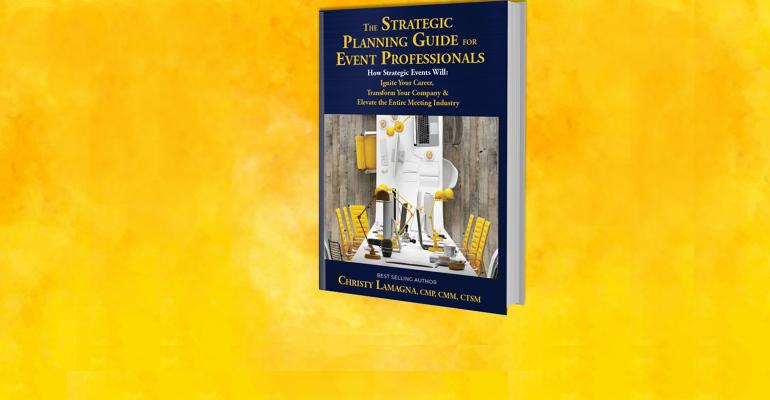Meeting planners’ bookshelves got a new addition this fall with the publication of The Strategic Planning Guide for Event Professionals by Christy Lamagna, CMP, CMM, CTSM. In it, Lamagna, founder of Strategic Meetings & Events, argues for a shift from logistics-centered planning to a strategy-focused process aimed at return on investment. We asked Lamagna about the basics of that philosophy and her process for writing the 181-page book.
MeetingsNet: There are quite a few books available on meeting and event management. What does your book add to the conversation?
Lamagna: The Strategic Planning Guide for Event Professionals is not about logistics or about how to be a better planner. It’s about turning meetings into powerful sales and marketing tools that shorten sales cycles, bring marketing messages to life, and influence a target audience’s behavior. It is just as relevant for sales and marketing executives as it is for planners. For executives who have bottom-line accountability, this book offers a plan to take events from expenditures to investments and to harness a resource that has always been there but never properly utilized. For planners, it’s a direct path from the ballroom to the boardroom.
MeetingsNet: What’s your favorite advice from the book?
Lamagna: Events need to answer the question “What’s in it for me?” for the audience. That means creating content around what the audience needs to hear, not what executives or speakers want to say. It also highlights that too often we treat event content as a “one and done” process, meaning it is said once and behavior is expected to change. In fact, messages need to be presented at least seven times before behavior changes, so we need to rethink our content strategy in terms of what is said, how it is presented, and how often it is repeated.
MeetingsNet: What was your process for writing the book and how long did it take you?
Lamagna: I thought that since I blog and write articles so regularly that the book would be nothing more than a very long article. I realized that’s like comparing babysitting for an hour to having a newborn. The book ate my life. It was in constant need of attention and had no schedule. It was nine months from start to finish, working with a team of designers, a project manager, a copy editor, and a publishing coach, so it was a Herculean effort. It was the epitome of not knowing what you don’t know. It also helped me hash out an outline for at least two more books, so here we go again!





